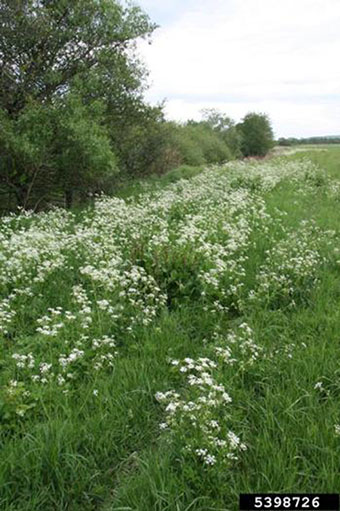Wild chervil
What you need to know about wild chervil. Includes habitat, identifying features and what you can do to reduce its impact.
History and location
Wild chervil (Anthriscus sylvestris), a native to Europe, is classed as a biennial plant and is spread primarily through seed dispersal. Wild chervil is a popular plant found in packages of European wildflower mixes and has made its way to North America. It is most commonly found along roadsides and hedgerows in the north-eastern United States and can be found in various locations in South and Central Ontario.
Photo: John Cardina, The Ohio State University, Bugwood.org

Photo: Robert Vidéki, Doronicum Kft., Bugwood.org

Plant identification
Wild Chervil is from the parsley family and therefore shares many of their qualities. This plant can grow to an average height of 1-4 feet, but on occasion has been seen to grow over 6 feet.
The stems are hollow, with soft hairs, particularly near the base. Each stem node has a fringe of hair.
The Leaves are alternate and fern like, divided in to many leaflets. They are nearly hairless with some hair on the lower surface.
The flowers are produced on the top of the stem as white umbels with 5 petals.
The seeds are green, and turn a shiny dark brown as they mature. They are approximately ¼ inch long.
Impacts and spread
Wild chervil has the ability to out-compete native plants in ditches, woodlot edges and pasturelands. This plant can play host to a disease, which affects carrots, celery and parsnips.
Human activity, wind, water, birds and other wildlife are all factors in the spread of wild chervil seed. It is extremely hard to control because of its large taproot and is resistant to many herbicides.
Wild Chervil is known to spread rapidly and aggressively along ditches, road right of ways, fencelines, and pasturelands. It is important to remove the entire plant as leaving some pieces behind will result in re-sprouting. Repeated mowing of this plant before it has gone to seed can deplete the root reserve resulting in its eventual decline.
Your help
The OIPC would like to know if you have seen this plant in your area. Call the OFAH/OMNR’s Invading Species Hotline at